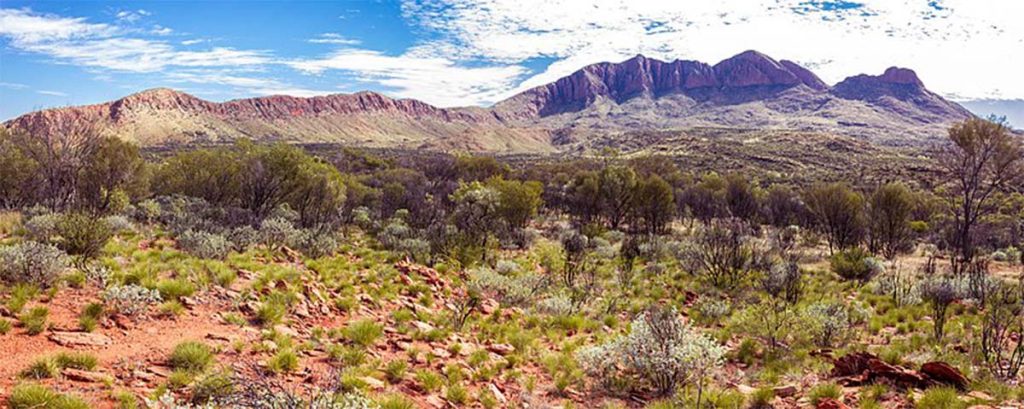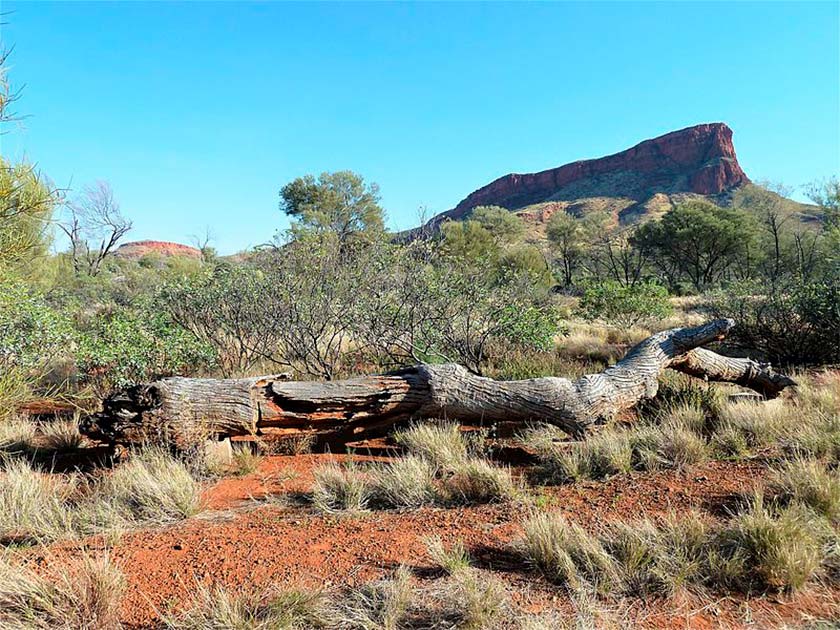Hidden deep within the vast and unforgiving desert of central Australia lies a mystery that has fascinated adventurers and treasure hunters for decades: the legendary Lasseter’s Reef. According to the tale, this hidden treasure trove is home to a vast deposit of gold that was discovered by an enigmatic man named Harold Lasseter in the early 20th century.
Despite numerous attempts to locate the reef, no concrete evidence of its existence has ever been found. However, the allure of the lost gold deposit continues to captivate explorers and adventurers alike, and the hunt for Lasseter’s Reef remains one of the most enduring and captivating mysteries of the Australian outback.
What Is Lasseter’s Reef?
Lasseter’s Reef is the name of an incredibly rich gold deposit supposedly located in one of the most remote desolate parts of central Australia. It was “discovered” by Harold Bell Lasseter, an Australian gold prospector made famous by his bold claims.
Lasseter revealed his grand discovery in 1929, two years before his death. On 14 October 1929, he wrote a letter to Albert Green (an Australian politician) in which he boasted he had found a massive gold-bearing reef in central Australia. The letter said that he had discovered the reef 18 years earlier (1911) and that it was on the western edge of the MacDonnell Ranges (a mountain range in the south of Australia’s Northern Territory).
When Green failed to pay much attention, Lasseter wrote to several other officials making similar claims. These claims led to him being interviewed by both a commissioner and a geologist, but the government left it there and chose not to investigate Lasseter’s claims any further.

This is likely because from 1908 to 1913 Lasseter was living on a farm in Tabulam, which is on the eastern coast of Australia and extremely far from where Lasseter claimed to have found his reef. He seemed unconcerned to profit from these riches himself during this time.
Having failed to gain any traction in 1929, Lasseter tried again in 1930. The problem is that this time his story was entirely different. He wrote to John Bailey, the head of the Australian Workers’ Union, and told him that when he was 17 years old, he had ridden a horse from Queensland to the West Australian goldfields.
- Gold in those Hills? The Legend of the Lost Dutchman’s Mine
- The Great Emu War of 1932: How did Australia Lose a War to Emus?
During this incredibly long journey, he had stumbled across a gold reef. He then told Bailey that before he could do anything about his discovery he had gotten into difficulties (central Australia can be harsh and unforgiving) and had had to be rescued by an Afghan camel driver who just so happened to be passing by, almost 10,000 km (6,200 miles) from home.
The camel driver then took Lasseter to a local surveyor, Joseph Harding, who went with Lasseter to find the gold reef. While they managed to find the reef again, they couldn’t fix its location due to a problem with their watches. There is again an issue with this second story: records showed Lasseter was supposed to be at reform school during the period he claimed to be riding across Australia.
So why had Lasseter given up, waiting until 1929 to approach these men? Well according to Lasseter he hadn’t. He claimed to have spent over three decades trying to arrange an expedition to Australia’s interior.
The problem was that no one was interested. He blamed it on the gold rush at Kalgoorlie (in western Australia) that had started in 1851. Potential investors weren’t interested in funding a risky trek into the wilderness when they were all already making a fortune at Kalgoorlie.
The Expedition
Lasseter chose to reveal his great discovery right when Australia was feeling the worst effects of the Great Depression, one of the worst economic disasters in modern history. Suddenly, a great untapped gold reserve in the center of Australia sounded much more appealing and Lasseter managed to secure around £50,000 in funding to lead an expedition.
To Lasseter’s credit, he wasn’t messing around. His expedition utilized both motorized vehicular transport and an aircraft, which was both unusual for the time and costly.
He also brought in experts to help him including Fred Blakeley (an experienced bushman), George Sutherland the prospector, an engineer by the name of Phil Taylor, and Baleston-Houston (a fellow explorer and the governor-general’s aide). If anyone was going to find Lasseter’s Reef, it was this team.
The group left Alice Springs, a town in central Australia, on 21 July 1930. The expedition got off to a bad start and things only went downhill from there. The problem, at least at the start, was Lasseter, whom his companions described as sullen and vague.
The group suffered constant logistical difficulties and physical hardships, even losing their plane at one point. Eventually, they made it to Mount Marjorie (now known as Mount Leisler).

It was here that Blakeley decided enough was enough. After hearing Lasseter declare that they were over 240 km (150 miles) too far north of where they should be, he put an end to the expedition, describing Lasseter as a “charlatan”.
- The Lost Mine of Ophir and King Solomon’s Gold
- What happened to Lamont Young? The Mystery of the Bermagui Five
The little fellowship parted ways but Lasseter insisted on going on, bringing with him a dingo-hunter called Paul Johns and his pack of camels. A few days into their team up Lasseter returned to camp with some rock samples that he claimed to be from his gold reef. He refused to tell Johns exactly where it was located though.
Lasseter’s behavior had been growing increasingly erratic and Johns had grown to doubt his sanity. He too accused Lasseter of being a fraud and after a fight, the two went their separate ways. Johns returned to civilization while Lasseter set off even deeper into the brush.
Finding Lasseter
Lasseter’s body was found in March 1931 by bushman Bob Buck, who had been sent out to look for him. His body was discovered in an area called Winter’s Glen while his personal belongings had been left in a cave at Hull’s Creek.

His diary revealed that the camels had bolted not long after Johns had. Lasseter had been left stranded in the desert with no food, water, or way to get back home.
Before his death, he had come across a group of aboriginal people who had offered him food and shelter. However, according to the book Lasseter’s Last Ride, Lasseter somehow offended them, and they condemned him to be ignored. Lasseter died not long after from malnutrition and exhaustion.
So, will Lasseter’s Reef ever be found? Does it even exist? Well, no concrete evidence of its existence has ever been found and Lasseter wasn’t what anyone would describe as a reliable witness. While he genuinely seems to have believed in the reef’s existence, it’s clear that he had become increasingly unhinged over the years.
We do know thanks to statements from John Paul roughly where Lasseter’s Reef might be if it does in fact exist. The problem is geologists are torn as to how likely a huge gold deposit in that area might be. Some have described it as incredibly unlikely, while some modern geologists have increasingly come around to the idea, citing gold discoveries in similar areas.
The use of satellite imagery and other advanced technologies has helped archaeologists and explorers discover previously unknown sites and artifacts in remote areas. So, if Lasseter was telling the truth, there’s more hope now than ever before that we might find Lasseter’s Reef. If it exists.
Top Image: If Lasseter’s Reef was not real, then why would Lasseter insist it was to the point of travelling on an expedition to find it and dying in the process? Source: Samuel Sidney / Public Domain.